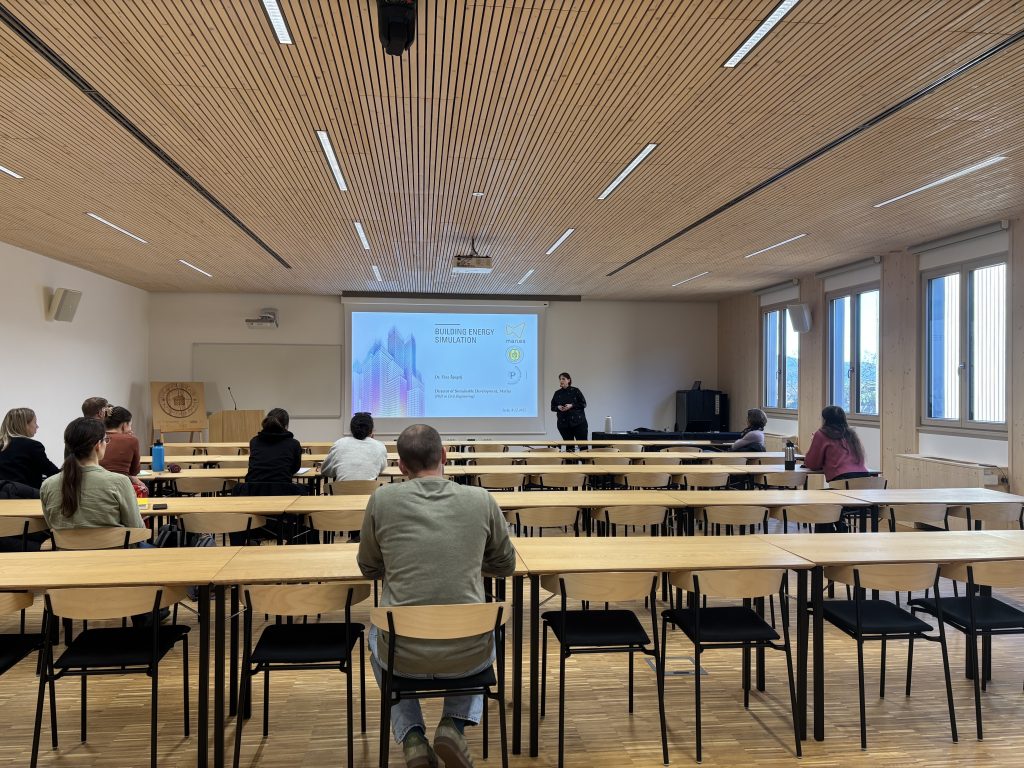
December 10, 2025

All building elements exposed to abiotic factors, such as the fluctuation of temperature and humidity, UV radiation, or wetting by rain, change appearance and structure. The alteration of appearance, being a consequence of the exposure of unprotected wood, is limiting the use of timber as a cladding material. This is why practitioners use different types of wood modification to improve the material characteristics. Among the modification processes is also acetylation. It is a commercially developed treatment that improves wood’s dimensional stability, UV resistance, and enhances wood’s durability and stability without compromising its mechanical strength.
Commercial treatments are predominantly restricted to the acetylation of softwood (mainly radiata pine) leaving the performance of hardwood species unexplored. However, recent forest management along with climate change is leading to a rapid increase in the proportion of hardwoods, that are not yet optimally allocated to appropriate utilization paths. This is why InnoRenew CoE researchers – Dr. Anna Sandak, Faksawat Poohphajai, and Dr. Rene Herrera Diaz – together with Dr. Oihana Gordobil, from the Faculty of Engineering of Gipuzkoa, University of the Basque Country, studied the natural weathering performance of three wood species representing hardwood and softwood modified with the commercial acetylation process.
The Alder (Alnus glutinosa L.), beech (Fagus sylvatica L.), and radiata pine (Pinus radiata D. Don) were characterised by various techniques to determine the aesthetical, chemical, and physical changes. The techniques included measurement of colour, gloss, 3D roughness, wettability, infrared spectroscopy, and thermal decomposition.
A relatively short period of exposure to weathering showed that overall aesthetic performance of the investigated species was similar. However, the multi-sensor technique utilized for characterisation revealed differences in weathering behaviour amongst the studied species in terms of surface erosion, wettability, and chemical composition alterations. Hardwoods roughened with time due to surface erosion and the washing away of deteriorated components, whereas acetylated radiata pine remained smooth. The treated pine also retained its color better for the first three months of weathering. Water slowly soaked into the acetylated pine, whereas hardwoods absorbed water quicker. Additionally, it was discovered that hardwoods are more heat-resistant.
These results show a comprehensive understanding of the long-term performance of acetylated wood, which directly influences its practical applications by enhancing design strategies, maintenance planning, product development, market acceptance, and overall sustainability. Performed tests have demonstrated the potential of underutilised hardwood species, enhanced through the acetylation process, to serve as alternative cladding materials to commonly used acetylated radiata pine.
Read the whole article “Weathering of Wood Modified with Acetic Anhydride—Physical, Chemical, and Aesthetical Evaluation” (Sandak et al., 2024) published in Forests.
Author: Lea Primožič, Dr. Anna Sandak, Faksawat Poohphajai, Dr. Rene Herrera Diaz, Dr. Oihana Gordobil